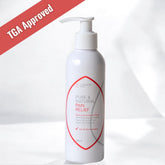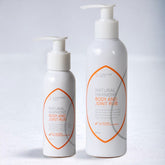Pain Relief Spray vs Cream vs Gel: Which Is More Effective

Topical pain relief products are everyday essentials for people managing muscle soreness, stiff joints, or minor injuries. Whether you choose a pain relief spray, cream, or gel, each has unique benefits that suit specific types of discomfort. This guide breaks down how each works, when to use them, and what to consider when choosing the best option for your body.
How Topical Pain Relief Works
Topical pain relief products are applied directly to the skin, allowing active ingredients to penetrate the affected area without entering the bloodstream.
Common components include menthol, camphor, essential oils, and plant-based anti-inflammatories. These ingredients stimulate nerves in the skin to create cooling or warming sensations that help reduce pain and relax muscles.
The difference between sprays, creams, and gels lies mainly in their texture, absorption rate, and the type of pain they target.
Pain Relief Spray
Application
Spray directly onto the affected area from a short distance (usually 5–10 cm). There’s no need to rub or massage, just allow it to dry naturally.
Benefits
- Quick and clean to apply, no sticky hands or residue
- Fast absorption for immediate comfort
- Reaches hard-to-access areas like the back or shoulders
Best For
- On-the-go relief for sore muscles
- Post-workout or sports recovery
- Mild aches or temporary muscle strain
When to Use
Ideal during the day, before or after exercise, or whenever you need instant muscle spray pain relief without pausing your routine.
Pain Relief Cream
Application
Massage a generous amount into the affected area using circular motions until fully absorbed. The act of massaging helps improve blood circulation and enhances the cream’s effects.
Benefits
- Provides deeper, longer-lasting relief
- Hydrates and nourishes dry or sensitive skin
- Suitable for discomfort like mild rheumatic arthritis, gout, or back stiffness
Best For
- Persistent or recurring pain
- Back pain and joint pain
- Those who prefer a soothing sensation
When to Use
Best applied in the evening or after a warm shower when muscles are relaxed or can also be used for targeted comfort before bed or rest.
Pain Relief Gel
Application
Apply a thin layer of gel over the affected muscle or joint. Gently spread it without heavy rubbing, its lightweight texture allows quick absorption.
Benefits
- Cooling sensation reduces inflammation fast
- Non-greasy and quick-drying, perfect for daytime use
- Offers immediate comfort after sports or physical activity
Best For
- Muscle soreness and sports injuries
- Inflammation or swelling
- Users who prefer a clean, non-oily finish
When to Use
Apply right after workouts, long hours of standing, or repetitive movements. Particularly effective for active individuals or those managing daily strain.
Difference between Spray, Cream and Gel
| Feature | Spray | Cream | Gel |
| Texture | Light mist | Rich, thick | Smooth, cooling |
| Absorption Speed | Very fast | Fast | Fast |
| Massage Needed | No | Yes | Lightly optional |
| Best Used For | Quick surface pain | Deep joint/muscle pain | Cooling inflammation |
| Ideal Time to Apply | Before/after activity | Evening or recovery time | Post-exercise or daytime use |
| Hydration Level | Light | Deep | Deep |
Choosing the Right One for You
The best choice depends on your lifestyle and pain type:
- Spray: For quick, portable use and mild aches.
- Cream: For long-lasting hydration and deep joint relief.
- Gel: For cooling, fast-absorbing comfort after activity.
Each plays a role in recovery, some people even combine them, using a pain relief gel after workouts and a cream for pain relief before rest.

Precautions
- Always follow the product’s label instructions.
- Avoid applying on broken or irritated skin.
- Wash your hands after application unless using a spray.
- If you have sensitive skin or allergies, do a patch test first.
- Consult a healthcare professional before using on children, during pregnancy, or if you’re taking other medications.
Expert Tip
Whether you prefer a gel, cream, or spray, look for formulas made with natural oils and botanical extracts. These ingredients are gentle on skin and effective for long-term use without harsh side effects.
For instance, Florentine Gold focuses on naturally inspired body care with formulations that help ease joint and muscle tension while supporting overall skin health. Explore the Natural Harmony Body and Joint Rub and the Natural Pain Relief for reference on ingredient transparency, benefits and formulation quality.
Read more: Difference between Natural Harmony Body & Joint Rub vs. Pure & Natural Pain Relief
FAQs
1. Can I use pain relief spray and cream together?
Yes, you can. Apply spray first for instant relief, then cream for deeper hydration.
2. Are sprays as effective as creams?
Sprays act faster but may not penetrate as deeply as creams, which are better for pain.
3. Is pain relief spray suitable for sensitive skin?
Most are safe, but always test on a small patch before use.
4. How often can I apply these products?
Usually 2–3 times per day as needed, depending on the product’s instructions.
5. Do these products help with gout or arthritis pain?
Yes, a gout pain relief cream or joint-targeted ointment can ease stiffness and inflammation.
Final Thoughts
Each form of topical pain relief spray, cream, and gel has unique strengths. By understanding their differences and following proper precautions, you can manage everyday pain naturally, safely, and effectively. helping your body stay flexible and at ease.
Explore nature-inspired pain relief options at Florentine Gold’s Pain Products Collection for gentle, effective muscle and joint support.
Disclaimer: At Florentine Gold, we’re all about natural wellness and love sharing tips, stories, and insights we’ve picked up along the way. That said, everything you read in this blog is for general information and educational purposes only. It’s not medical advice and isn’t intended to diagnose, treat, cure, or prevent any condition. If you’re dealing with a health issue or taking medication, we always recommend checking in with your healthcare provider as part of your wellness journey.









